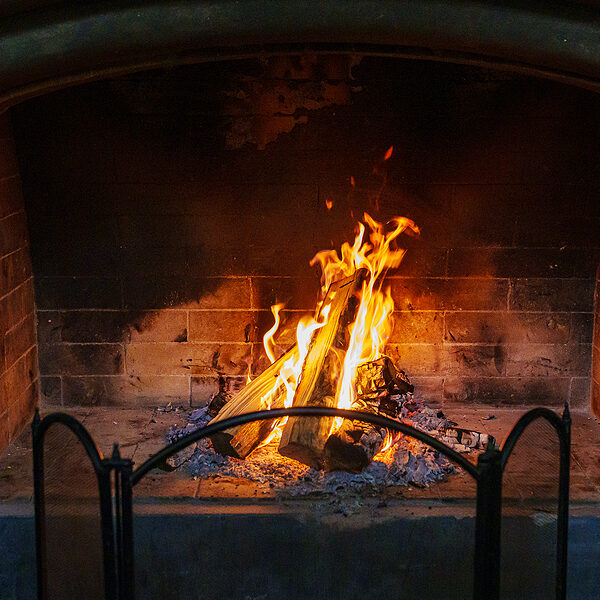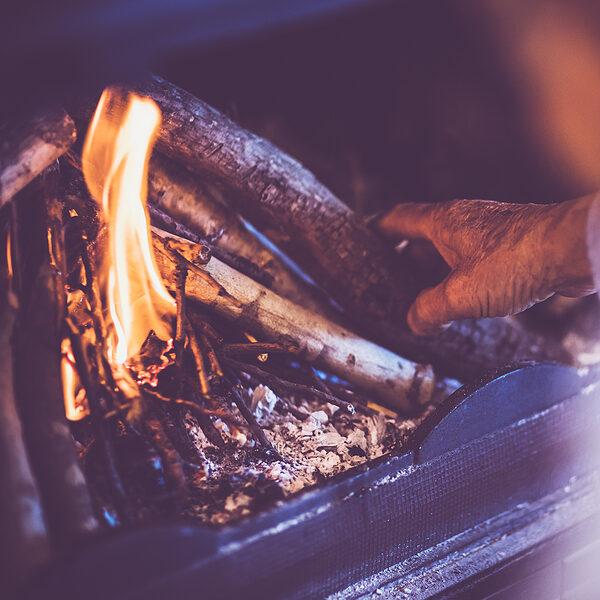Stages of Wood Combustion
Did you know that there are several stages of burning woods? While your intention may be to simply warm up your home, there are some things you should know about the process of burning wood using a chimney. There are four stages of a fire, and optimal warming doesn’t occur until you reach stage 3. Let’s take a look at the four stages of a fire and defining characteristics of each.
 Stage 1 – Start-Up or Ignition Stage
Stage 1 – Start-Up or Ignition Stage
At the very beginning of a fire, the main focus is to heat up the fireplace flue and get the fire started. During this stage, dry kindling and/or fire starter should be used. As the fire begins to heat up the flue, a draw will develop and start to pull in combustion air. This stage is important to develop a solid foundation for the fire. It’s important to avoid using newspaper to get your fire started as it could lead to excess creosote.
Stage 2 – Creosote Stage
During this stage, it’s time to start adding wood to the fire. It’s important to stick to dry seasoned woods with a moisture level under 20%.
How do you know if your wood is dry?
A good rule of thumb is: if you add a piece of wood to the fire and it starts burning on three sides within one minute, it’s dry and good to burn. If possible, avoid burning fire if the wood turns black and starts to burn within 3-5 minutes as it is damp. Especially avoid wood that takes longer than 5 minutes to burn as it means it is quite wet.
Once you get the correct wood to add to your fire, make sure there is proper ventilation for smoke to exit your chimney. As your fire develops, you’re looking to remove moisture and get to around 400–415 degrees Fahrenheit. Once the wood is cleanly burning without grey smoke, you’re likely out of stage 2.
Stage 3 – Heating Stage
Once you reach the heating stage, the wood moisture is gone and you’ll notice the flames are orange and slow moving. This is the ideal stage to be in to optimally heat your home. Not only will this provide maximum heat, it will also produce the least amount of creosote. Creosote is highly flammable and the main chemical that needs to be removed during your annual fireplace cleaning.
Stage 4 – Die Down Stage
Lastly, once you’re ready to let your fire die down, you can open your damper. This allows the flue to stay warmer and ultimately avoid additional creosote buildup as the fire goes out. This is one of the reasons why it is very important to have a correctly functioning fireplace damper.

Call National Chimney Cleaners for Your Fireplace Needs
Do you live in or near Fairfield County, Stamford CT, Morris County, or Parsippany NJ? If so, any of your fireplace or chimney questions can be answered by our team at National Chimney Cleaners. Our certified chimney experts have the training and qualifications to provide insights on any issues as well as services such as chimney inspections, masonry repairs, chimney cleaning, fireplace installation, chimney cap installation, and more. Schedule your appointment today by filling out our convenient online form or by calling 800-631-6177.

 Stage 1 – Start-Up or Ignition Stage
Stage 1 – Start-Up or Ignition Stage